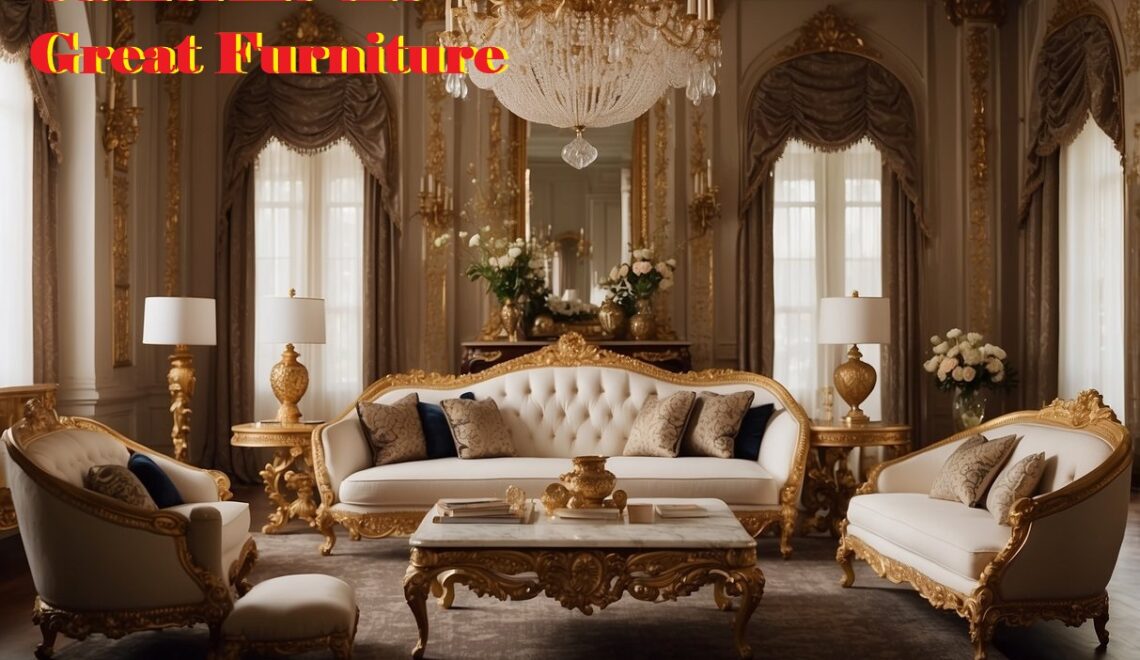
Catherine the Great Furniture: History, Design, and Royal Influence
Catherine the Great Furniture – A Complete Guide
When we talk about luxury, elegance, and the golden era of European furniture, one name shines through history – Catherine the Great of Russia. Her reign (1762–1796) was not just a political transformation but also a cultural renaissance that deeply influenced art, architecture, and furniture design. Catherine the Great’s passion for grandeur, aesthetics, and refinement left behind a legacy of ornate palaces filled with furniture masterpieces, many of which survive today as symbols of imperial magnificence.
Let’s dive deep into the world of Catherine the Great furniture.
Who Was Catherine the Great?
Before exploring the furniture legacy, it’s essential to understand the monarch herself.
Catherine II, better known as Catherine the Great, was one of Russia’s most influential rulers. She ascended the throne in 1762 after the overthrow of her husband, Peter III, and reigned until 1796.
She was a strong advocate of the Enlightenment movement, corresponding with philosophers like Voltaire and Diderot. Her reign brought advancements in education, arts, literature, and architecture.
Her passion for European art and luxury extended naturally to furniture. She transformed her palaces with ornate interiors inspired by French Rococo, Neoclassicism, and Baroque styles, blended with Russian imperial grandeur.
The Role of Furniture in Catherine’s Court
Furniture in Catherine’s time was not merely functional – it was a statement of wealth, culture, and political power.
- Status Symbol: Owning French-inspired furniture showcased Russia’s rising place in European politics.
- Art Patronage: Catherine commissioned leading European craftsmen to create masterpieces for her palaces.
- Symbol of Enlightenment: Her furniture often reflected the values of reason, symmetry, and order championed by the Enlightenment.
- Cultural Identity: By blending Russian traditions with European styles, Catherine created a unique furniture identity that stood apart from the rest of Europe.
Styles of Catherine the Great’s Furniture
Catherine’s reign was a golden age of stylistic diversity. Her furniture collections represent a fusion of Rococo, Baroque, and Neoclassicism.
1. Rococo Influence
- Originating in France, Rococo style emphasized elegance, curves, pastel colors, and gilded decorations.
- Catherine imported Rococo furniture for her private chambers.
- Chairs and settees often had delicate carvings, floral motifs, and curved legs.
2. Baroque Grandeur
- Baroque furniture symbolized drama, boldness, and heavy ornamentation.
- Throne chairs, banquet tables, and cabinets in Catherine’s palaces reflected opulence.
3. Neoclassical Designs
- Inspired by ancient Greece and Rome.
- Catherine embraced straight lines, symmetry, and restrained elegance in her later years.
- Neoclassicism became a hallmark of her reign, influencing Russian furniture for decades.
Master Craftsmen and Designers of Catherine’s Era
Catherine’s patronage extended to both Russian and foreign craftsmen.
- David Roentgen: A German cabinetmaker famous for mechanical furniture with hidden drawers and secret compartments. He supplied Catherine with ingenious desks and cabinets.
- Jean-Henri Riesener: A French ébéniste (cabinetmaker) who specialized in marquetry and luxury pieces. His works influenced Russian royal commissions.
- Russian Artisans: Catherine encouraged local craftsmen to adopt European techniques while retaining Russian artistic traditions.
Famous Furniture Pieces Commissioned by Catherine
Some of the most remarkable pieces from her collection include:
- Mechanical Writing Desk by David Roentgen: Equipped with hidden compartments and elegant marquetry.
- The Throne of Catherine the Great: A gilded chair, richly decorated with imperial symbols.
- Marquetry Cabinets and Commodes: Featuring intricate inlay designs and classical motifs.
- Dining Tables and Banquet Furniture: Large, extendable, and richly carved for state banquets.
Catherine the Great’s Palaces and Their Furniture
Catherine filled her Winter Palace, Tsarskoye Selo (Catherine Palace), and Hermitage with treasures.
The Winter Palace
- Throne room filled with gilded chairs, sofas, and cabinets.
- Imported French Rococo furniture.
Catherine Palace (Tsarskoye Selo)
- Known for the Amber Room, but also for richly decorated Rococo and Baroque furniture.
The Hermitage
- Catherine founded the Hermitage Museum.
- Its interiors showcased mechanical furniture, neoclassical pieces, and rare cabinets.
Influence of Catherine’s Furniture on Europe and Russia
Catherine’s collection did not just decorate her palaces; it set trends across Europe.
- Russia became a hub for neoclassical furniture production.
- Her commissions encouraged Russian artisans to refine their craft.
- European craftsmen gained prestige by working for Catherine.
Legacy in Museums and Modern Collecting
Today, Catherine’s furniture survives in museums and private collections.
- The Hermitage Museum (St. Petersburg) holds the largest collection.
- Tsarskoye Selo showcases restored Rococo and Baroque pieces.
- Auctions: Catherine’s attributed furniture occasionally appears in Sotheby’s and Christie’s auctions, fetching high prices.
Important Information Table
Here’s a quick reference table about Catherine the Great Furniture Styles and Features:
| Style | Features | Example in Catherine’s Collection |
|---|---|---|
| Rococo | Curved legs, floral motifs, light pastel colors, gilding | Chairs and settees at Catherine Palace |
| Baroque | Heavy ornamentation, dramatic carvings, bold structures | Throne chairs, banquet tables |
| Neoclassical | Straight lines, symmetry, Greco-Roman motifs | Writing desks, cabinets at the Hermitage |
| Mechanical Furniture | Hidden compartments, marquetry, innovation | David Roentgen’s mechanical desks |
Catherine the Great Furniture in Modern Times
- Collectors seek these pieces as rare investments.
- Interior designers often recreate Catherine-inspired furniture with neoclassical elegance.
- Luxury furniture houses still draw inspiration from Catherine’s patronage.
Conclusion
Catherine the Great’s reign was more than just a political transformation; it was a cultural revolution that left a permanent mark on European decorative arts. Her furniture collections reflected power, elegance, and the Enlightenment spirit, blending French Rococo charm, Baroque drama, and Neoclassical order.
Today, Catherine’s furniture continues to inspire historians, collectors, and designers alike. From the palaces of St. Petersburg to modern luxury homes, the legacy of Catherine the Great furniture remains timeless.







